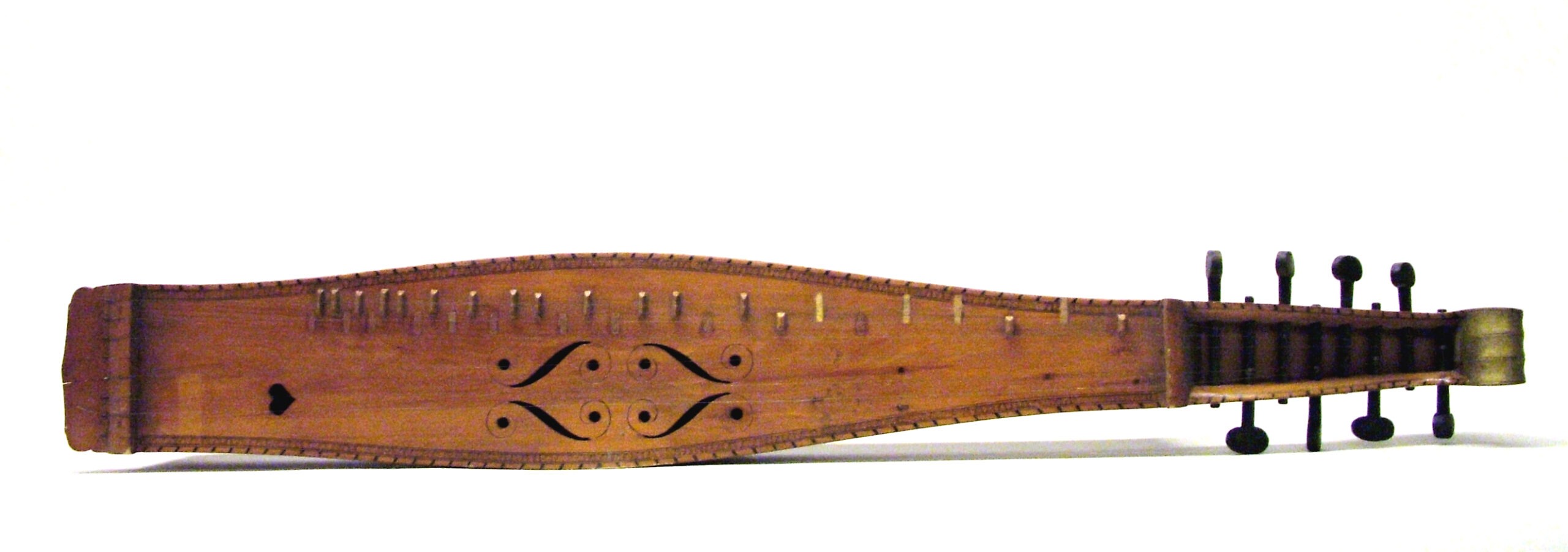The langeleik is a stringed musical instrument that originated from Norway. Among the several mountains and valleys of Norway, the only areas where the langeleik instrument has a living tradition were the Vardal and Valdres. Most commonly, the langeleik was used for domestic rural music until the 19th century. Afterward, when the use of this instrument became widespread, a significant number of the langeleik can be found in Telemark and Oppland, Norway.
This Norwegian chordophone droned zither-plucked has about eight drone strings and one melody string. Under the langeleik’ s melody strings are its seven frets that formed diatonic major scales per octave. Meanwhile, its drone strings are tuned in a set of three notes, called a triad. This instrument, also known as langeleik, is tuned to an A, although the significant C key is used as if it is tuned in the key of C. This is to simplify both reading and writing to avoid the use of accidentals, a note pitch that is not a member of the scale.
Moreover, since the langeleik cannot play the twelve-tone scale and cannot be tuned in to other pitches, its ability is limited to play along with other instruments. As well as that, its ability to play more complex music is also limited. However, despite that, the tone melody and drone strings of the langeleik gives it a unique rich sound.
The earlier characteristic of the langeleik features a rectangular shape instrument with an open bottom.The langeleik usually has five or six strings that often have unique traditional scales aside from the modern major scale that uses ¾ tones. Furthermore, the third scale degree and the leading-note tend to be different. The third scale, also known as the third, often lies between the major and minor third. In addition to that, the seventh or leading note tends to be lower than the modern seventh. In comparison to the earlier langeleiks, the modern ones are more curved and broader in the middle. With this, modern langeleiks have a louder sound. They are also tuned to a significant scale and is made of wood or metal. The dimension of the standard langeleik is about 112.1 centimeters (length), 13.1 centimeters (width), 9.6 centimeters (depth of soundbox), 85.4 centimeters (longest string), and 52.2 centimeters (shortest string).
According to history, there are a variety of zither boxes that can be found in Europe. In fact, the traditional German stringed instrument called scheitholz was said to be the predecessor of the langeleik. However, some historians also stated that the Swedish Hummel was one of the predecessors of the langeleik. In 1980, a langeleik that was discovered in early 1524 was uncovered on a farm in Gjovik, Norway. This langeleik predates the occurrences of other similar instruments, the German scheitholz and the Swedish Hummel.
The older langeleik that was discovered was tuned after a system of musical tuning, in which frequency ratios are based on ratio 3:2. Although the langeleik was tuned to the system called Pythagorean tuning, the langeleik’s pitch was easy to move between low intervals to brighter significant notes. The fixed recognizable major scale of the langeleik is dated back after the year 1850s. Subsequently, this instrument had changed its tonation. With that, many performers had to change their melodies. Some are also opted to find new ones since the older repertoire is no longer fitted to the instrument’s more modern system.
In playing this instrument, the players must hold the instrument’s plectrum, most commonly known as pick, using their right hand. With the use of the plectrum, the player would be able to hit the strings and form a beat or rhythm. On the other hand, the performer’s left hand, particularly the index, middle, and ring finger, are used to hold down the melody in order to execute a melody beat or rhythm. Additionally, when a note is wanted in between the basic notes, either the middle or index finger is used to pull-off or hammer-on the melody strings. The types of music and tunes that are usually played in the langeleik are the Norwegian folk musical dances such as in springar, halling, mazurka, vals, gangar, and reinlender.

